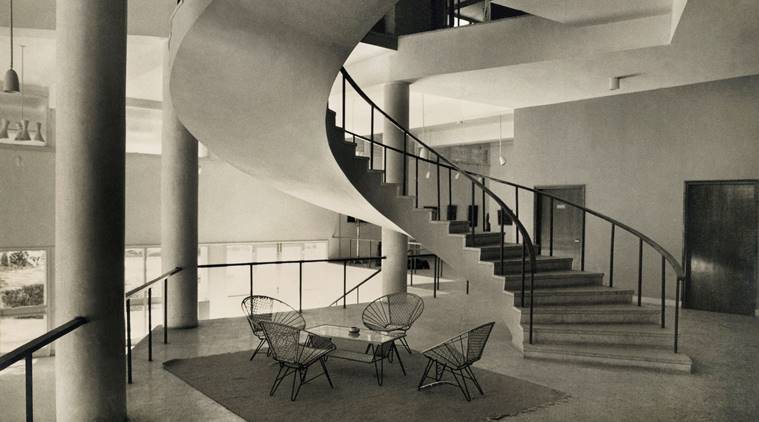 Lalit Kala; Sangeet Natak and Sahitya Akademi: The nearly 3.5 acre site hosts a Y-shaped administrative block.
Lalit Kala; Sangeet Natak and Sahitya Akademi: The nearly 3.5 acre site hosts a Y-shaped administrative block.
Architect Habib Rahman had just finished his work on the Maulana Azad Memorial when Prime Minister Jawaharlal Nehru invited him to design Rabindra Bhavan, to mark the birth centenary of Rabindranath Tagore in the capital in the early 1960s. Rahman, who until then had never built an institutional building, presented a design that irked Nehru, who saw no merit in a cube structure as a cultural space. What we see today, the trinity complex of national Academies — Lalit Kala (art); Sangeet Natak (dance, drama and music) and Sahitya Akademi (literature) — came from a rigour of wanting to create a modern vocabulary using the traditional grammar of design.
The nearly 3.5 acre site hosts a Y-shaped administrative block, which has the offices of the three academies across four floors, and a pentagon-shaped exhibition block, popularly known as the Lalit Kala Akademi (LKA) gallery. The long curved arms of the administrative block with fire-brick masonry end with rubble stone walls. With a sloping overhang that protects the building from rain, and chhajjas along windows to protect from the sun, the building was climate-sensitive long before air-conditioners made an appearance. A covered walkway that wears exaggerated arches connects the office building to the gallery.
As photographer Ram Rahman shows the ground plan of the site, he points to an open area that, once upon a time, held the ruins of a mosque where people offered prayers, even after the structures were built. “My father developed a language here with abstracted arches and jaalis as texture on the building façade. It was certainly a modern building but it looked at tradition in a very nuanced way. He was always sensitive to context. The curve of the façade rhymed with the Mandi House traffic island. The building then didn’t have compound walls, it was meant to be seen without boundaries from the road,” he says, talking of how there were skylights on the top and lower galleries at LKA, which has been covered up since and is a blank white wall now. The curved staircase within the gallery, too, had a northern skylight to allow natural light to stream in and well up the floors below.
Rahman remembers the time when veteran director Feisal Alkazi ran the National School of Drama (NSD) from the same building: “He asked my father if he could make a small stage, which came to be known as the Studio Theatre. It used to be on the top floor of the administrative block. I have seen Naseeruddin Shah and Om Puri in their first plays; all of the early actors from NSD were trained here.”
Artist Balan Nambiar, who was acting chairman of LKA from 2009 to 2012, says, “It was the then education minister Maulana Abul Kalam Azad who was responsible for the formation of the three academies and their function in the same building. However, there was never any combined programmes that were held. I had brought this to their notice, and the result was the first joint function of the three wings for Rabindranath Tagore’s 150th birthday in 2011. It was probably the first and the last time that such an event happened.”